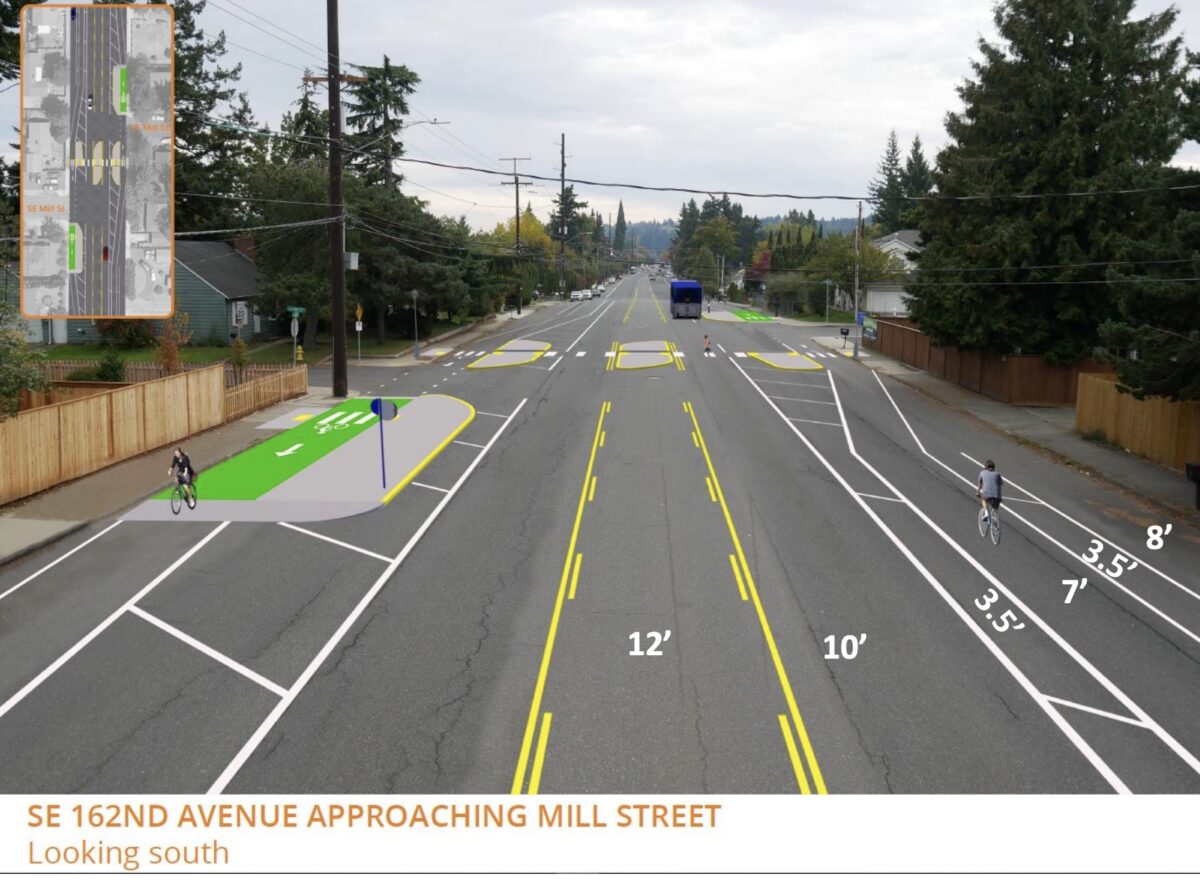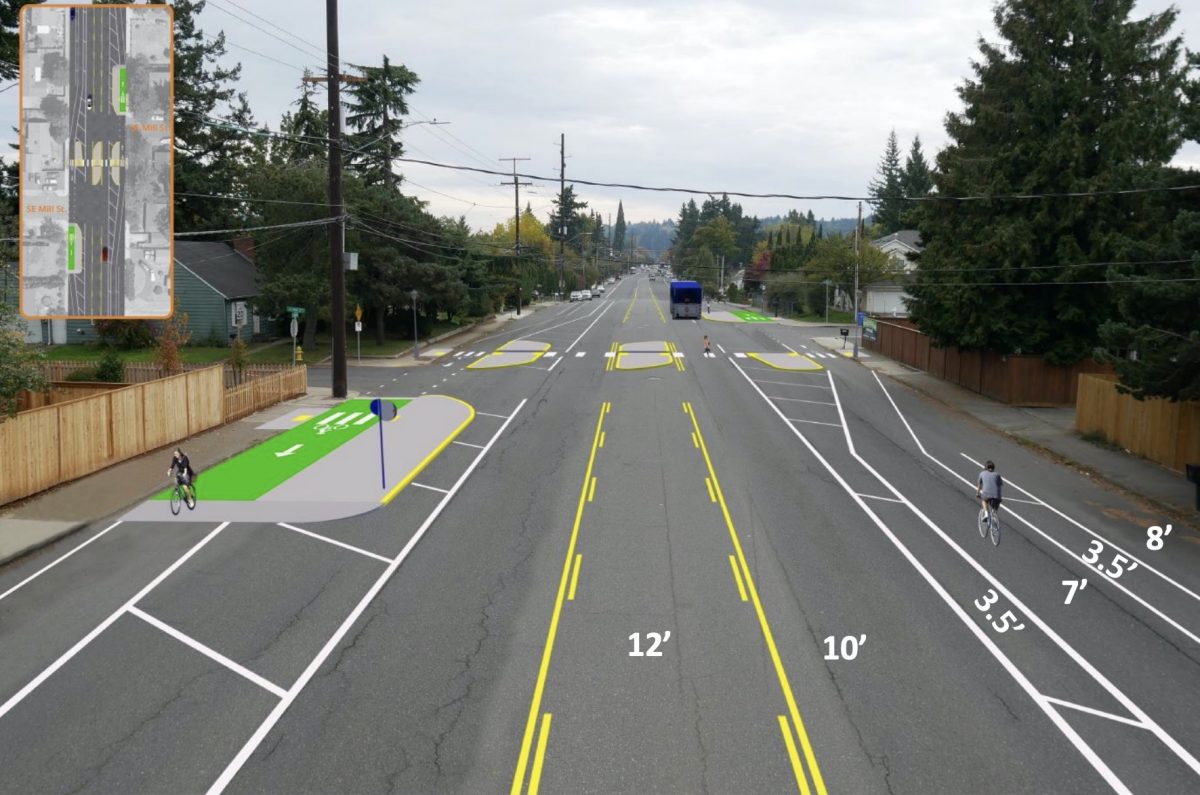
(Source: PBOT)
Portland’s plans for Southeast 162nd Avenue call for a road diet, but for bicycle riders the project will be more of a road buffet. With a $6 million budget the Portland Bureau of Transportation plans to re-configure the street in a way that reduces space for driving and vastly increases the space for cycling.
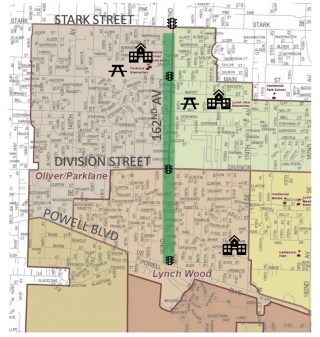
(Source: PBOT)
162nd between Stark and Powell (about 1.6 miles) is currently a typical east Portland arterial with on-street parking on both sides, a narrow and unprotected bike lane, and five general travel lanes (two in each direction and a center turn lane). The new cross-section will have three general travel lanes, with the extra space going to the bike lanes. PBOT is making the changes to complement a recent TriMet bus service upgrade on the street. In addition to the new striping plan, they’ll build seven new crossings (including substantial ones at Mill, Lincoln, and Tibbets), upgrade bus stops, repave the section from Division to Powell (0.7 miles), and build a few new pieces of sidewalk.
PBOT estimates that the change from five general lanes to three will lead to 68 additional seconds of travel time for the average driver.
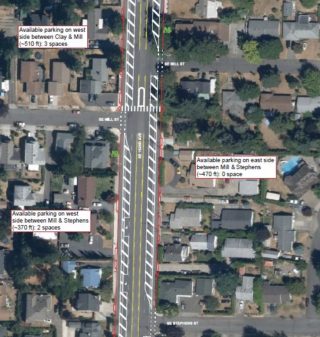
According to project manager Liz Rickles, who briefed the PBOT Bicycle Advisory Committee on the project at their November 10th meeting, initial plans called for a parking-protected bike lane where bicycle riders are curbside and people can park cars in the street. But Rickles gave a variety of reasons for why they’ve decided against that design. Chief among them was how a parking-protected design would have removed too many on-street parking spaces. “The challenge here is that there are so many driveways, that to allow for visibility of the driveways most of the on-street parking would get eliminated,” Rickles explained to the committee. “So you end up with the single parked car floating in the sea of asphalt.”
Rickles added that streets where PBOT has installed parking-protected bike lanes — like N Rosa Parks and NE Glisan — have shorter blocks and more sidestreets where people could park instead. The parking-protected design was also estimated to be $200,000 more expensive due to the need for plastic bollards and more pavement grinding. Local resident feedback also favored the buffered bike lane design, Rickles said.
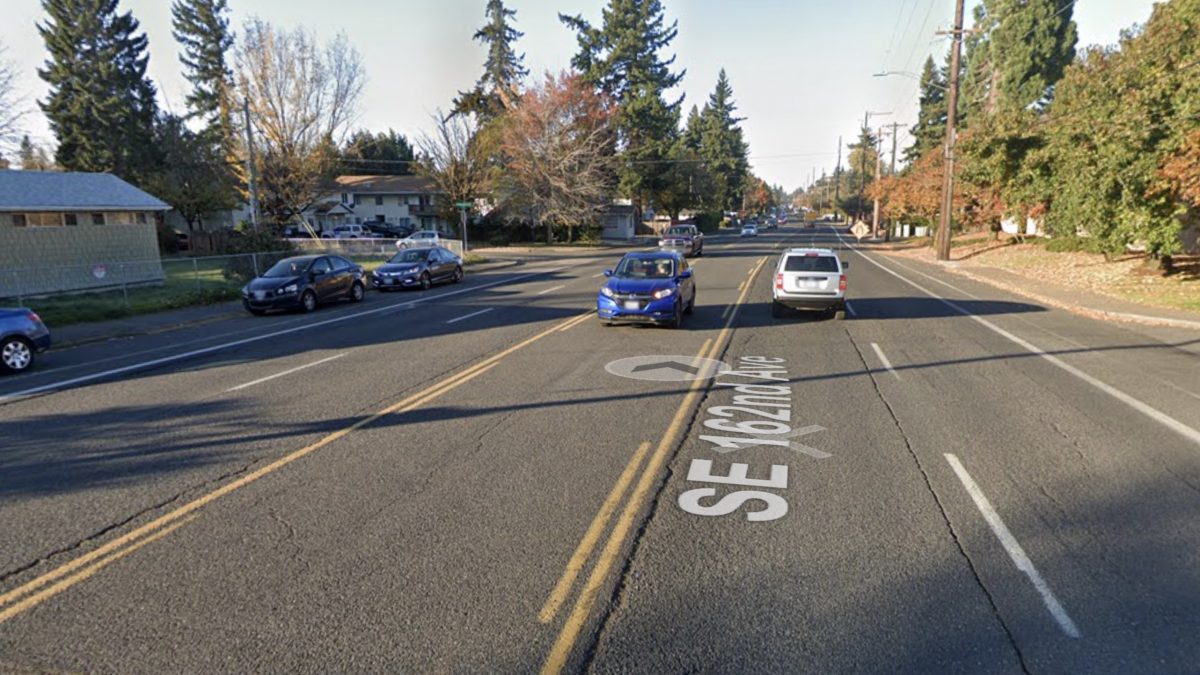

Advertisement
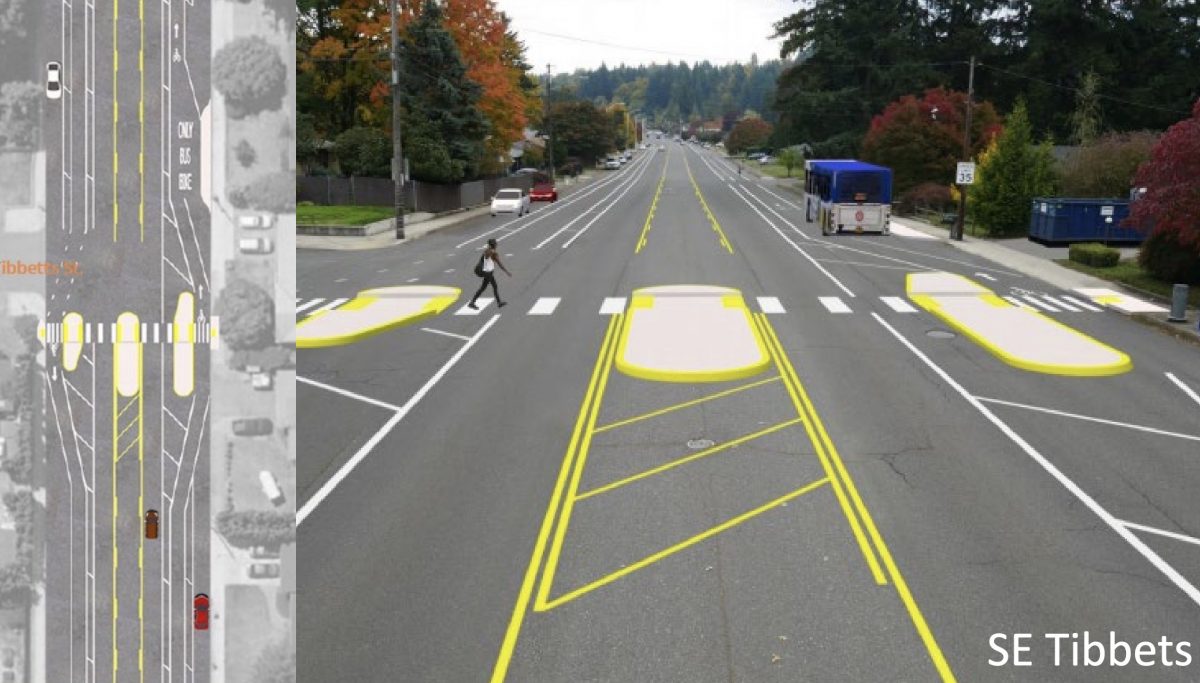
PBOT planner Zef Wagner, who was also at the meeting, reminded committee members that wider bike lanes were just a byproduct of the project’s main goal which was to make crossings safer on this dangerous street. 162nd is 76-feet wide and takes over 20 seconds for the average person to walk across. Combine that with a bad crash history and speed data that shows 80% of drivers go over the posted 35 mph speed limit (and 17% going 45 mph or more) and you see the need to tame auto users. “Doing a road diet was the way to provide crossings at an affordable price,” Wagner said.
If you’ve ridden the new bike lanes on North Denver Avenue in Kenton you’ll be familiar with this design. (It’s interesting to note that PBOT also initially proposed parking-protected bike lanes there too, and was going to implement them before they abruptly switched to buffered bike lanes due to pushback from nearby residents.) While wider, these buffered bike lanes offer no physical protection from car users. With the parking-protected design, bicycle users are separated from drivers by parked cars and concrete curbs and/or bollards.
One of the drawbacks of buffered bike lanes (opposed to curbside bike lanes) is that they weave back to the curb at intersections. With this project, PBOT will install bollards to help prevent right-hooks (see plan drawings below). Bicycle users will also share space with bus operators at some intersections (like SE Main and SE Division) where bus stops exist.
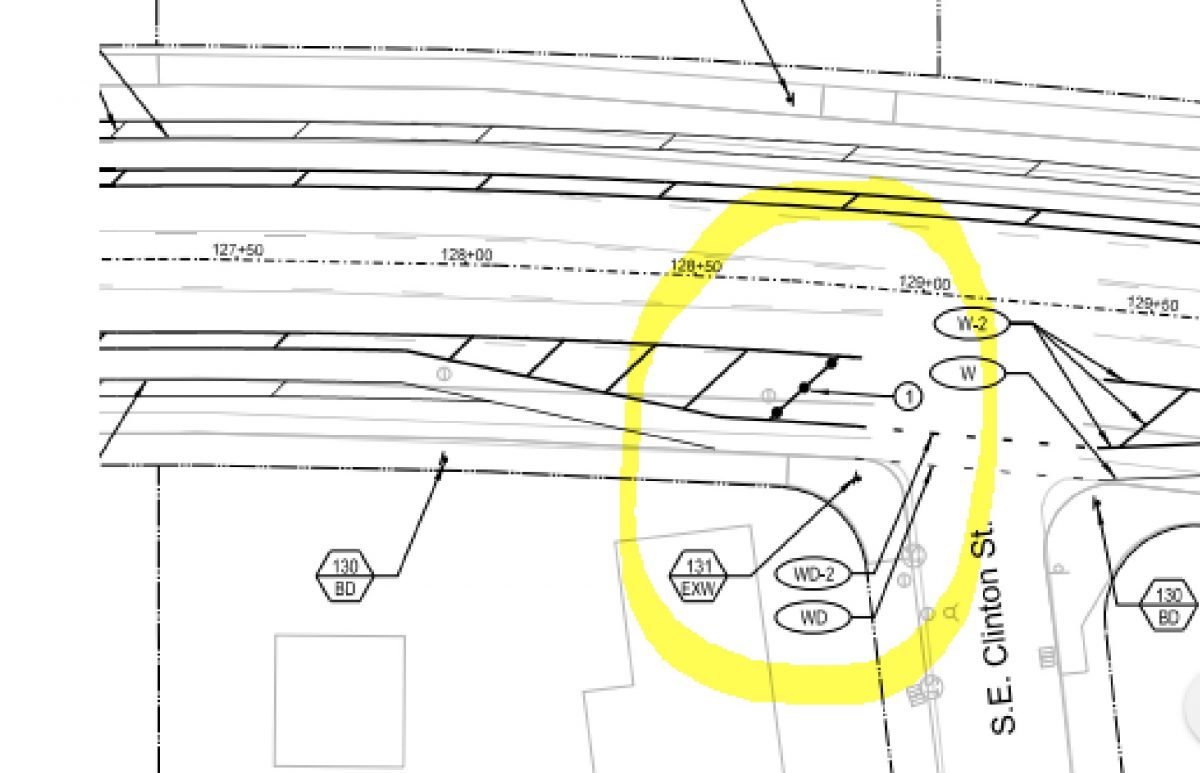


This project is slated to be built in summer of next year. For more information, check out the official project website.
— Jonathan Maus: (503) 706-8804, @jonathan_maus on Twitter and jonathan@bikeportland.org
— Get our headlines delivered to your inbox.
— Support this independent community media outlet with a one-time contribution or monthly subscription.
